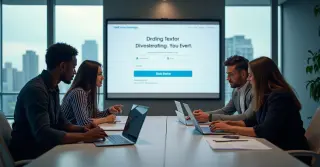How To Write A Landing Page

Creating a high-performing landing page is an essential skill for marketers and businesses alike. A well-designed landing page can be the deciding factor between a lost opportunity and a highly effective conversion. When writing a landing page, every word, image, and design aspect must serve a specific intent, guiding visitors toward taking a particular action. Whether you’re aiming to promote a product, your landing page needs to be strategically designed to meet its goal.
First, it's crucial to grasp the motivation behind why people visit landing pages in the first place. Visitors come with a need, and it's your job to match your messaging with that purpose. Clear, concise, and compelling content is key. Visitors should immediately know what the page is about and how it benefits them. In terms of writing, start with a bold headline that captures attention. The headline should convey the key benefit of your offer, explaining visitors what they will get in a clear, enticing manner.
Once you've captured the visitor's attention with a powerful headline, the secondary headline comes into play. This secondary line should support the headline, providing more details about what’s on offer. It’s here that you can delve deeper into the specific features, differentiating your product or service from others in the market. It’s important to keep in mind that this section should not be overly jargon-heavy or filled with confusing terms. Instead, focus on the how your offer improves their life — how your product or service improves a situation for the visitor.
Following the headline and subheadline, it's time to focus on the main copy. This is where you will expand on the value you’re offering. Use short paragraphs and bullet points to keep the content easy to read. Clear, concise language is essential, ensuring that visitors can quickly understand the advantages. It's not about overwhelming the reader with information but giving them just enough to make an decisive decision. Highlight important aspects and explain how they directly counter the pain points of your prospective customers.
Another crucial element is social proof. Testimonials, or trust signals can be incredibly effective. Showing that others have had a great experience with your product or service builds credibility and mitigates uncertainty. Ideally, the social proof should be genuine and address directly to the potential customer’s concerns.
The next important section of your landing page is the CTA button. This is where you tell your visitors what to do next. A strong CTA grabs attention and clearly instructs users on what action they should take. It’s important that your CTA is direct, encouraging and uses language that invites engagement. Phrases like “Start Today,” “Download Your Free Guide,” or “Save Now” are effective at prompting clicks. The CTA should be prominently placed, preferably in a visible area, and again, it should be repeated throughout the page.
Along with the Call to Action, visuals play a significant role in the impact of your landing page. Images should be connected, clear, and enhance the message of the page. For example, if you're advertising a product, display the product in use. If you’re offering a service, an image of happy customers or a well-designed infographic can demonstrate the value of what you’re providing. Professional images help build trust and can make the content feel more professional and trustworthy.
Optimizing your landing page for mobile responsiveness is also crucial. With the majority of web traffic coming from smartphones, it's essential that your landing page is optimized for smaller screens. Ensure that the design is flexible, the text is easy to read, and the buttons are accessible. A slow-loading landing page can be detrimental to conversions, so fast-loading design is also necessary.
The appearance and organization of the landing page should also contribute to its effectiveness. A minimalistic, uncluttered design helps keep visitors focused on the message without distractions. Use white space effectively, as it allows the content to breathe and makes it easier to navigate. Avoid cluttering the page with too many sections, as this can confuse visitors and cause them to bounce. Keep the layout intuitive and easy to follow, ensuring that the visitor's journey through the page feels smooth.
One overlooked aspect of landing pages is experimentation and optimization. Even after publishing a landing page, the work doesn't end. Use A/B testing to experiment with different headlines, action buttons, and other elements to see what resonates best with your audience. Data tools can also help you track how users are interacting with the page, allowing you to make data-driven decisions and improve performance over time.
In terms of SEO optimization, don't forget to include appropriate keywords in your landing page copy. Keywords should be organically integrated into the content, titles, and meta descriptions. This not only helps with search engine rankings but also ensures that the page aligns with what your target audience is interested in. Also, make sure your landing page’s load time is quick, as search engines take this into account when ranking pages.
Lastly, make sure that the content on your landing page is aligned with the ad or link that brought visitors there. Consistency in messaging is critical for keeping visitors interested. If a user clicks on an ad that promises a “50% discount,” the landing page should reflect that offer. Any inconsistency between the ad and the landing page will likely cause the visitor to exit, negatively affecting your sales.
Writing a successful landing page requires a balance of effective messaging, design, and optimization. By focusing on your visitor's needs, crafting compelling copy, and continuously optimizing your page, you can create a landing page that drives conversions and helps meet your targets.










